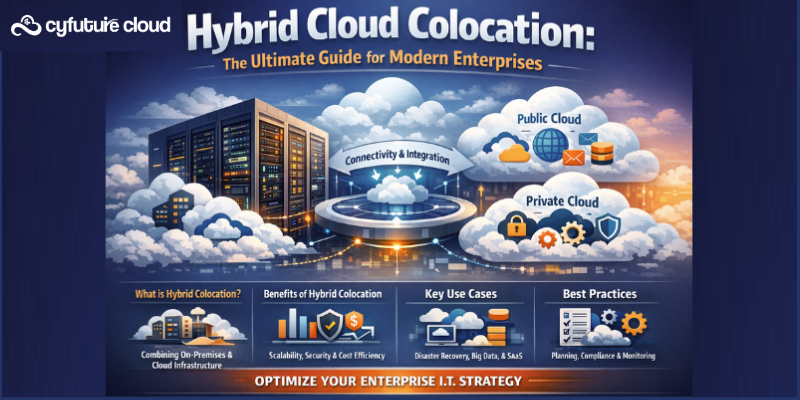Table of Contents
DevOps and Microservices serve as the bedrock of contemporary software development practices and cloud-native applications. Together, they form the backbone for crafting agile software solutions tailored for enterprises. Cloud-native architectures thrive on the presence of Microservices, which are indispensable for their completeness. Enterprises leverage advanced methodologies like DevOps and Microservices to architect and deploy cutting-edge software applications. This approach enhances agility and operational efficiency, as DevOps and Microservices complement each other seamlessly.
Thanks to this symbiotic relationship, organizations can deploy cloud-based applications as independent services. This enables tight collaboration between IT operations and development teams, facilitating the rapid delivery of high-quality software. DevOps practices, when implemented on the cloud, ensure precise replication of the production environment, fostering seamless collaboration between development and IT operations.
Microservices, a form of service-oriented architecture (SOA), are small, independent functional components utilized as services. Their modular nature simplifies application development, testing, and comprehension. With increased modularity, DevOps teams can concurrently develop and deploy microservices, leading to quicker deployment across various cloud platforms like AWS and Microsoft Azure without the need for platform-specific code.
Introduction Of Microservices
Instead of creating a single application, Microservices is an architectural style that allows you to develop an application as a compilation of multiple services. The architectural style offers various advantages over monolith, including:-
- Easy to test and maintain
- Loosely joined
- Separately deployable
- Planned around business effectiveness
- Managed by a small team
Microservices promote the operating model, like setting up small teams and making one functional change at a time. Also, these adjust the scaling since these are isolated from the remaining system. It is good to look at microservices as enablers for faster and more agile application delivery. But, microservice architectures lead to an outbreak in the number of processes your team has to manage.
Microservices turn your single monolithic application into various independent services. Perhaps each service must be duplicated or deployed for resilience to different regions and created in development, test, and production environments. That’s where the actual problem starts, such as:
- To develop and deploy, Microservices need a lot of infrastructure. There are platforms to help, as Kubernetes and Swarm take away a lot of hassle from your way for development and deployment. However, it would be best to integrate your continuous pipelines, service discovery mechanisms, monitoring, and debugging.
- You must set up reliable automation to support repeatability and eliminate potential errors and issues often common with human processes. Everything needs to be defined in code, testable, and repeatable, like your server setup, which should be orchestrated with Puppet, ansible, docker-machine, or other tools.
- While a monolith service is predictable, you know all its quirks and behaviours; this is not the same with microservices. Being distributed and independent, you must develop or use centralized monitoring, logging, and alerting to manage them efficiently.
- Backward and forward compatibility needs to be maintained in service architecture design.
- A big microservices deployment is analogous to a network system regarding monitoring and management. It must therefore be developed and implemented as a network.
Introduction Of DevOps
The DevOps movement blends a culture shift that emphasizes the value of information sharing with the application of contemporary tools that foster teamwork. In DevOps, a multidisciplinary team uniquely contributes to each project while utilizing cutting-edge tools. This change uses CI/CD pipelines to create a high-speed environment for deployments.
Consider DevOps as the replacement for the waterfall model, which makes it difficult to reap the benefits of microservices. Application development is accelerated, and deployment maintenance is made simpler by incorporating concepts from the DevOps movements, such as automation, people, and processes.
DevOps infrastructure automation approaches are all about using contemporary application development techniques like autoscaling, golden images, automatic deployments, and dynamic service registration at runtime. Additionally, it enables you to greatly benefit from Microservices designs by using cloud, virtualization, and containerization technologies.
How Microservices And DevOps Complement Each Other
Utilising DevOps entails using technology to automate procedures and improve operations. The complexity of integrating DevOps makes building the correct culture, which emerged through profound shifts in how people work and cooperate, important. But when enterprises commit to a DevOps culture, they build an environment for high-performing teams.
Here, microservices teams can be considered high-performing since they focus on one aspect of the application while compiling continuous communication and collaboration for better team productivity, application performance, and faster deployment.
DevOps practices widely focus on breaking down monolith apps into small components and managing them as of choice as a team. Since they are isolated from the rest of the system, microservices support this application development & deployment strategy and scaling. This is why blending DevOps with microservices or vice-versa in the software development life cycle is the fastest way to enhance the output of the distributed teams.
Let’s check how microservices and DevOps complement each other in day-to-day activities:
1. Continuous Integration And Continuous Delivery (CI/CD)
Teams using a microservices architecture can independently develop and deploy their code and services to development, test, and quality assurance environments without interfering with or disturbing other teams. Adopting DevOps means adopting CI/CD practices that help streamline software development and delivery lifecycles. CI/CD supports distributed teams to persistently build and validate their code and ship only a high-performing code to production.
2. Version Control
Version control is a fundamental DevOps practice that ensures proper versioning of microservices, such as keeping track of change over time, deployment access clusters, and how they impact the complete application. It helps maintain the required backward and forward compatibility of the application. With DevOps, Git is a popular version control system technology.
3. Agile Software Development
DevOps uses all the goods of agile software development practices and multiplies them using automation. Microservices that led to a small number of teams require strong project management. With automation and agile development, DevOps has become a core pillar of microservices by offering on-demand provisioning of resources, ensuring frequent and faster releases.
4. Infrastructure As Code
DevOps enables teams to shift to infrastructure as code principles and lets them deploy system resources in a reliable, repeatable, and controlled manner. IaC helps teams from the risk of human error, specifically in large complex environments, and enables them to automate deployment.
5. Configuration Management
DevOps promotes using configuration management tools to control the state of resources. Configuration management tools provide better insights into the resources such as servers, virtual machines, and databases. Additionally, using tools aids teams in implementing changes in a controlled, methodical manner, lowering the risks associated with changing system configuration.
6. Continuous Monitoring
Continuous monitoring is one of the main benefits of DevOps. It helps obtain real-time visibility of the overall application stack’s performance and general health. Teams may use it to create meaningful, actionable alerts and gather comprehensive telemetry, allowing them to learn from massive amounts of data.
Monolith systems that used to take longer processes, decisions, and delays in response times can easily be identified with DevOps best practices. The most effective use of cloud, microservices, and DevOps is in IT modernization initiatives.
Advantages Of Combining DevOps And Microservices
Microservices, which enable continuous supply and deployment, speed up software delivery. Most organizations are implementing or moving towards continuous delivery, which entails releasing software in months as opposed to years, weeks as opposed to months, days as opposed to weeks, or hours as opposed to days.
Numerous releases per day may be produced through continuous deployment.
Microservices were born out of the DevOps methodologies used by cloud-native businesses to produce software more quickly and with higher quality. The benefits of microservices and DevOps include the following:
- More frequently released software
- Architecture based on the cloud
- Higher calibre code
- Scalability
- Resilience
- More advanced automation
- Flexibility
- Freedom
- Software reusability
- Higher levels of DevOps productivity
Devops for Microservices
Absolutely, DevOps and microservices are highly compatible and often used together to achieve efficient and streamlined software development. Here’s a brief summary of DevOps principles specifically applied in the context of microservices:
-
Automation: DevOps advocates for automated processes throughout the software development lifecycle. In the case of microservices, automation is crucial for building, testing, deploying, and scaling individual microservices independently. Tools like container orchestration (e.g., Kubernetes) and continuous integration/continuous deployment (CI/CD) pipelines play a significant role here.
-
Continuous Integration and Continuous Deployment (CI/CD): Microservices architecture benefits greatly from CI/CD practices. DevOps principles encourage automated testing and deployment pipelines, ensuring rapid and reliable delivery of changes to microservices, facilitating frequent updates without disrupting the entire application.
-
Monitoring and Observability: DevOps emphasizes monitoring and observability for the entire system. In a microservices environment, it becomes vital to monitor each service independently to detect and address issues promptly. DevOps practices advocate for centralized logging, monitoring, and tracing mechanisms to maintain system health.
-
Scalability and Resilience: DevOps aims for systems that are highly scalable and resilient. Microservices inherently support scalability due to their modular nature. DevOps practices encourage the use of scalable infrastructure and automated scaling mechanisms to manage varying workloads in a microservices environment.
-
Collaboration and Communication: DevOps promotes collaboration and communication among teams. In microservices architecture, this translates to teams having clear communication channels and working closely to ensure that services interact effectively. DevOps practices like cross-functional teams and shared responsibilities align well with microservices development.
-
Infrastructure as Code (IaC): DevOps promotes treating infrastructure as code. In the context of microservices, this involves managing infrastructure for each service separately, enabling easier provisioning, scaling, and deployment through code-driven approaches.
By adopting DevOps practices tailored for microservices architecture, teams can effectively manage the complexities inherent in distributed systems, streamline development workflows, and achieve faster, more reliable releases of software.
Conclusion
Even while the combination of DevOps and microservices has the potential to benefit teams and organizations greatly, enterprises should pursue a platform approach. This will help to ensure that everyone in development and operations can benefit from these technologies.
A platform strategy can refer to more than just the hardware and operating system(s) that run it. It also affects every software programmers create and use, such as the operating system, cloud computing, storage, and middleware framework. Establishing a platform guarantees that your microservices have a stable foundation to expand without impacting the organization.
Additional elements that speed up production include provisioning, cloud sandboxes, and delivery pipelines (for continuous flow).
Final thoughts? Thanks to introducing microservices architectures and DevOps in the industry, organizations may accomplish their goals and ambitions while maintaining an advantage over (or keeping up with) their competitors. Any firm may profit from the perfect synergy between microservices and DevOps, which speeds up adoption and promotes experimentation.
Recent Post
Send this to a friend

 Server
Colocation
Server
Colocation CDN
Network
CDN
Network Linux
Cloud Hosting
Linux
Cloud Hosting Kubernetes
Kubernetes Pricing
Calculator
Pricing
Calculator
 Power
Power
 Utilities
Utilities VMware
Private Cloud
VMware
Private Cloud VMware
on AWS
VMware
on AWS VMware
on Azure
VMware
on Azure Service
Level Agreement
Service
Level Agreement 



















